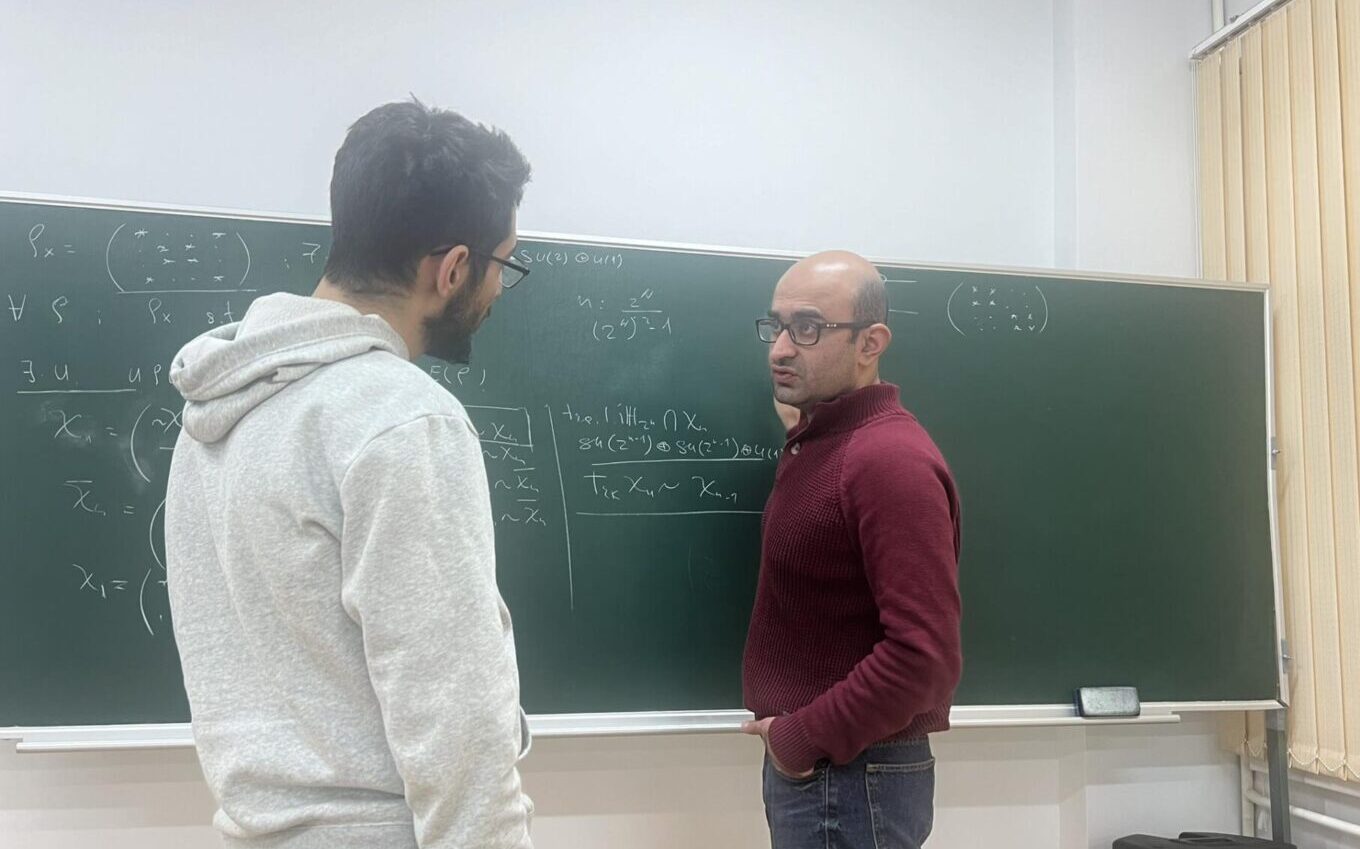About Us

Team
We are a research team based in Alikhanyan National Laboratory, Yerevan, Armenia. We have several groups researching different topics from quantum computing and information to decision theory and probabilistic inference. We started somewhere in 2015 as a small research group (Armen Allahverdyan and Sanasar Babjanyan). Joining efforts with David Karakhanyan we started to organize seminars at Alikhanyan National Lab: a weekly research seminar on quantum theory and statistical mechanics, and a monthly seminar on frontiers of the modern science. Both were generally successful; hence our research group enlarged and eventually turned into the Department of Quantum Technologies due to the support of Ani Aprahamian.
Future Plans
Working scientists often lack well-defined plans (you cannot plan a discovery or an influential paper). As we look back at our research history, some plans for the future begin to emerge. Eventually, what can count as our overall research goal is to make quantum and statistical physics research more interdisciplinary, more related to biology and computer science, but also more adherent to standards of rigor accepted in theoretical physics proper. More specifically (i.e. for coming 3-4 years or so), we want
-- Relativistic theory of quantum measurement that is based on statistical physics
-- Quantum Doppler metrology, i.e. a metrological theory that employs a motion of a target to understand its internal features
-- A barganing theory that would be more grounded on cognitive psychology and psychophysics (the Weber-Fechner law)
-- Understand deeper implications of the common cause principle--
-- Understand the role of zilch (Oppenheimer's energy) in electrodynamics
-- Limitations and possibilities of hydrodynamic engines
-- Statistical physics of rotating systems
-- How to define the correct energy density in quantum mechanics, and how to employ for uncovering interesting quantum effects
-- How to make keyword search engines more efficient
-- When and how the pressure can be negative
-- What is statistical mechanics of dipolar fluids